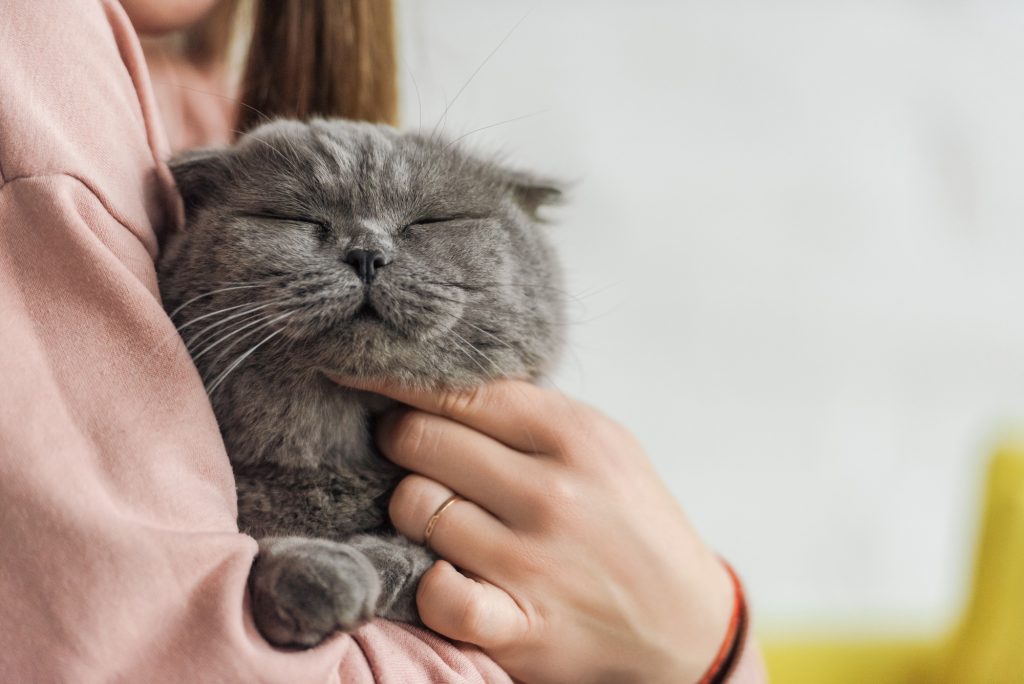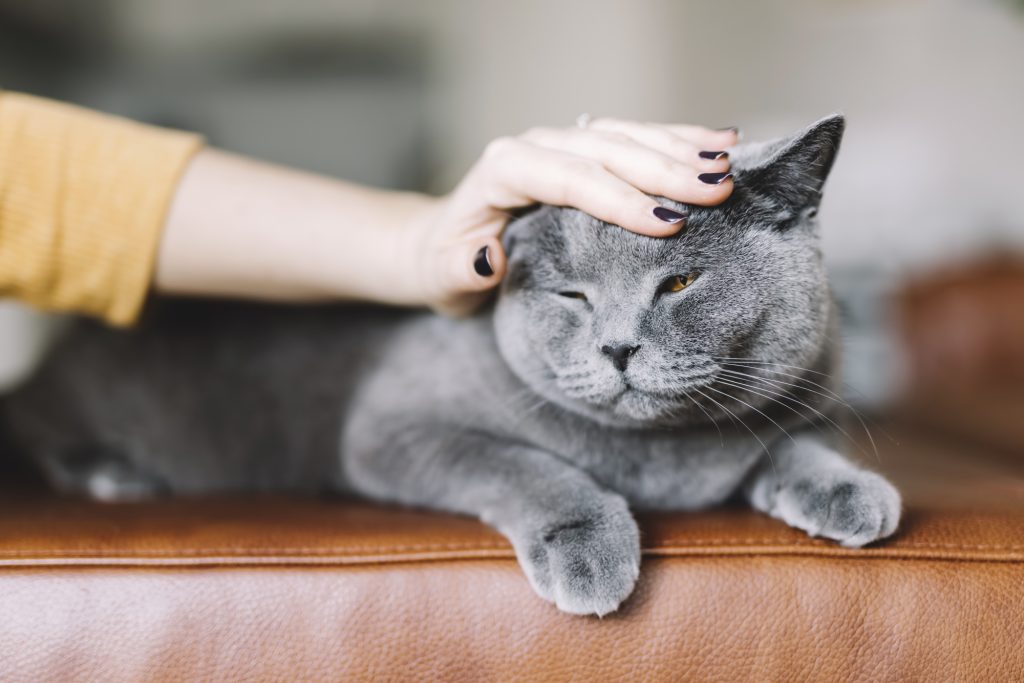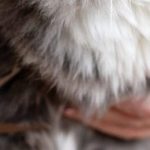Table of Contents
Dandruff in cats is a common concern for pet parents, often highlighting underlying health issues such as inflamed skin, especially prevalent in overweight cats and older cats. Understanding the causes of dandruff is crucial for identifying the right solutions, and ensuring your feline friend stays comfortable and healthy.
What Is Cat Dandruff?
Cat dandruff is essentially the presence of dead skin cells that flake off the cat’s skin, much like what happens with humans. These flakes can be a sign of various skin conditions or simply a result of naturally occurring skin shedding. Spotting dandruff in your cat’s coat can be the first step to addressing potential skin care needs.
Unlike the dandruff seen in humans, cat dandruff can be more challenging to detect and treat due to their fur. It’s important to understand that dandruff is not just a cosmetic issue but could also indicate health concerns that may require attention.
Signs of Cat Dandruff
When a cat has dandruff, you may notice small white flakes on their coat. Obese cats often have more pronounced skin problems due to difficulty grooming. It’s important to treat dandruff seriously, as it may point to underlying cat health issues or external parasites.
• Visible Flakes
Visible flakes in a cat with dandruff are a clear sign that your pet may need a treatment plan. These flakes are often accompanied by skin lesions, indicating underlying medical conditions. Incorporating omega-3 fatty acid supplements into their diet can help improve skin health and reduce flakiness.
• Dull, Dry Coat
A dull, dry coat can be one of the first indicators of skin irritation in cats. This lackluster appearance often correlates with the presence of dandruff and may call for a closer examination of your cat’s skin and fur care routine.
• Itching and Scratching
Excessive itching and scratching in cats can lead to more severe skin irritation and even injuries. It’s often a response to the discomfort caused by dandruff and dry skin, signaling the need for a closer look at your cat’s skin health.
• Irritated Skin
Irritated skin in cats can manifest as redness, bumps, or even open sores. This discomfort can stem from various causes, including dandruff, and it’s essential to address these symptoms promptly to prevent further complications.
• Flaky Buildup
A flaky buildup on your cat’s skin beneath their fur is a telltale sign of dandruff. This accumulation can lead to more significant discomfort and skin irritation if not managed properly.
• Increased Shedding
Increased shedding may occur alongside dandruff, as skin irritation can cause cats to lose more hair than usual. Monitoring shedding patterns can help you identify when it’s time to take action against dandruff.

What Causes Cat Dandruff
Understanding the root causes of cat dandruff is the key to finding effective treatments and preventing future occurrences.
1. Dry Skin
Dry skin is a common culprit behind dandruff in cats. It can result from environmental factors, diet, or other underlying health issues that affect skin hydration and health.
2. Allergies
Allergies can provoke skin inflammation in cats, leading to dandruff. Identifying and managing these allergies is essential for providing relief and preventing the recurrence of flaky skin.
3. Skin Conditions
Skin conditions, including skin infections, can cause irritated skin and necessitate a comprehensive treatment plan. Addressing these underlying medical issues is crucial for resolving dandruff and restoring skin health.
4. Age-Related Changes
As cats age, their skin undergoes changes that can make them more susceptible to dandruff. Awareness of these age-related shifts can help you better care for your senior cat’s skin needs.
5. Stress and Anxiety
Stress and anxiety can have a significant impact on a cat’s overall well-being, including their skin health. Managing your cat’s stress levels is an essential part of preventing and treating dandruff.
6. Grooming Issues
Proper grooming plays a crucial role in maintaining a healthy cat’s coat and preventing existing dandruff. Lack of grooming can cause scaly patches and an accumulation of dead skin. Brushing your cat regularly helps distribute natural oils, removes loose fur, and can reduce the risk of dandruff. It’s essential to incorporate cat grooming into your pet’s routine to ensure their skin and coat stay in top condition.
7. Medications
Some medications may contribute to dry, itchy skin in cats, which can lead to dandruff. It’s vital to monitor your cat after starting any new medical treatment for signs of skin irritation. Flea control products, while essential for preventing fleas and ticks, can also sometimes cause skin dryness. Always consult with a vet before administering any treatments to ensure they are suitable for your pet’s specific needs.
Tailored Solutions to Combat Cat Dandruff
Solutions to combat cat dandruff often depend on the underlying cause. It’s about finding the right balance of diet, grooming, and environmental factors to keep your feline friend’s skin healthy.
• The Role of Nutrition in Managing Dandruff
Nutrition is key to a healthy cat’s skin and coat. A diet rich in essential fatty acids, like those found in wet food, can help hydrate the skin and reduce dandruff. Look for foods that include fish oils or other sources of omega-3s to support skin health. Hydration is also important, so make sure your cat has constant access to fresh water.
• Grooming Techniques to Alleviate Dry Skin
Grooming is not just about keeping a cat’s coat clean; it also stimulates the skin and helps prevent dryness. Regular combing or brushing can remove dead skin cells and improve circulation. In dry climates, it’s especially important to maintain a regular grooming schedule. Additionally, using a humidifier can help maintain moisture levels in the air, benefiting both your cat’s skin and coat.
• Moisturizing and Special Care Products
For felines with dry skin or skin allergies causing dandruff, moisturizing shampoos or topical treatments can offer relief. Products designed specifically for cats can help hydrate the skin and repair the cat’s coat. Remember, human dandruff shampoos are not suitable for cats and can harm their sensitive skin. Always choose cat-specific products to avoid adverse reactions.
• Creating a Dandruff-Unfriendly Environment
To prevent dandruff, keep your cat hydrated by ensuring they always have access to fresh water. A well-humidified environment can also help prevent your cat’s skin from drying out. Consider using an air purifier to reduce potential airborne allergens that may contribute to skin irritation and dandruff formation.
Home Remedies and Over-The-Counter Solutions
Regular brushing and omega-3 fatty acid supplements are excellent home remedies that can help manage dandruff in cats, contributing to healthier skin and coats.
1. Coconut Oil: A Natural Skin Hydrator
Coconut oil is renowned for its hydrating properties and can be used to moisturize your cat’s skin. Apply a small amount to your hands and gently massage it into the cat’s coat, focusing on dry areas. This natural oil can soothe the skin and provide relief from itching.
2. Omega Fatty Acids: Boosting Skin Health From Within
Incorporating omega fatty acids into your cat’s diet can significantly improve skin health. These supplements can help strengthen the skin barrier, reducing dryness and flakiness. Omega fatty acids are found in certain fish oils and can be added to your cat’s food or given as a separate supplement.
3. DIY Oatmeal Baths: Soothing Itchy Skin
A homemade oatmeal bath can provide relief for a cat’s itchy skin. Blend plain oatmeal into a fine powder and mix it with water to create a soothing paste. Gently rub this mixture onto your cat’s skin, let it sit for a few minutes, and then rinse thoroughly. This natural remedy can calm irritated skin and alleviate dandruff.
4. Probiotics: Supporting Skin Through Gut Health
Probiotics can support a cat’s skin health by improving gut health, which in turn can have positive effects on skin conditions. When a cat’s digestive system is healthy, it can better absorb nutrients necessary for maintaining a healthy skin and coat. Add probiotics to your cat’s diet as directed by a veterinarian, especially if they have a history of kidney disease or other health issues.

When to Consult Your Veterinarian
If your cat is showing signs of persistent dandruff, skin irritation, or allergy symptoms, it’s time to consult your veterinarian. They can help identify the cause of the dandruff and recommend appropriate medical treatment or specialized grooming techniques. Sometimes, dandruff can be a sign of an underlying health issue that requires professional attention.
It’s also important to see a vet if your cat’s skin condition does not improve with home remedies or over-the-counter solutions. A veterinarian can offer medical advice, prescribe flea control or flea prevention treatments, and suggest dietary changes or supplements to improve your cat’s skin and coat health.
Frequently Asked Questions
1. Should I wash my cat if it has dandruff?
Washing a cat with dandruff can help to remove dead skin cells and moisturize the skin, but it should be done cautiously. Over-bathing can strip the skin of essential oils, leading to more dandruff. Instead, use a gentle, cat-specific shampoo designed for sensitive skin, and always ensure the water is lukewarm to prevent drying out your cat’s skin further.
2. Does brushing make cat dandruff worse?
Contrary to making dandruff worse, brushing can be beneficial. Regular grooming helps to distribute natural oils throughout the coat, reducing flaky skin. It also removes dead skin cells that contribute to dandruff. However, using a brush that’s too harsh can irritate the skin, so opt for a soft-bristled brush suitable for your cat’s fur type.
3. Is cat dandruff harmful?
Cat dandruff isn’t typically harmful, but it can indicate underlying health issues, such as food allergies or a lack of essential fatty acids in their diet. Ensuring a well-balanced diet and consulting your veterinarian if dandruff persists is crucial. In some cases, dandruff can lead to more serious skin issues, and matted fur, especially if your cat has sensitive skin or is prone to excessive grooming.
Final Thoughts
Understanding and addressing cat dandruff can significantly improve your furry friend’s quality of life. It’s not just about aesthetics; dandruff can be a sign of underlying health issues that deserve attention. By incorporating appropriate nutrition, regular grooming, and creating a stress-free environment, you can help keep your cat’s skin healthy and dandruff-free. Remember, while home remedies can be effective, they should never replace professional veterinary advice when it’s needed.

Hi, I’m Zoey, a devoted mom to two charming Siamese cats. My passion lies in assisting fellow pet owners in providing optimal care for their cats. On CatsEuphoria, I share practical tips and relatable stories, inviting you to join me in appreciating the authentic bond between humans and our beloved feline companions.




